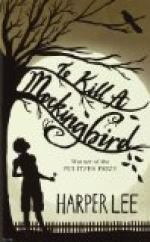|
This section contains 493 words (approx. 2 pages at 300 words per page) |

|
The Use of Grammar in To Kill a Mockingbird
Summary: In To Kill a Mockingbird, Harper Lee used the local language and grammar that would have been used in the South at that time in history and that would be true to the characters in the book. She used adjectives describing characters and events that not only belonged to the times, but that also would show the reader exactly what was meant. This approach to grammar worked because the focus of the story is told from Scout's viewpoint and through Scout's interactions with those around her.
When Harper Lee wrote To Kill a Mockingbird, she used the language and grammar that would be true to the characters in the book. She created the town of Maycomb, Alabama, and to give the reader true understanding, she used the old-fashioned local language that would have been used at that time in history. She used adjectives describing characters and events that not only belonged to the times, but that also would show the reader exactly what was meant. An example is when Atticus tells Dill to put some of the country back where it belongs, he is really telling Dill to take a bath.
The informal language used by the characters, in particular Scout, Jem, and Dill is very easy to understand and takes the reader along with the characters. It is not distracting, it lets you see the events as they happened, and to feel a...
|
This section contains 493 words (approx. 2 pages at 300 words per page) |

|


